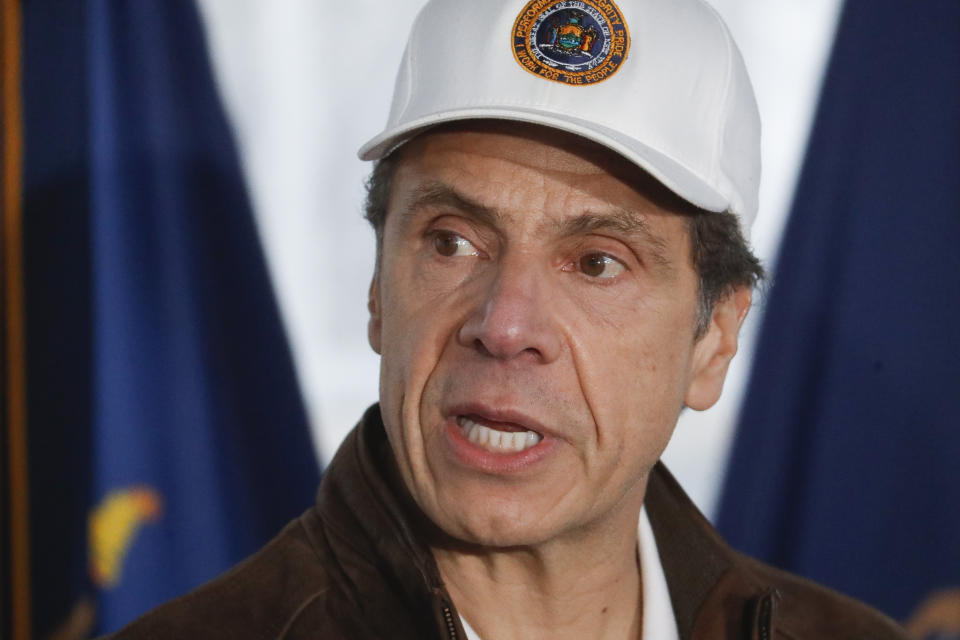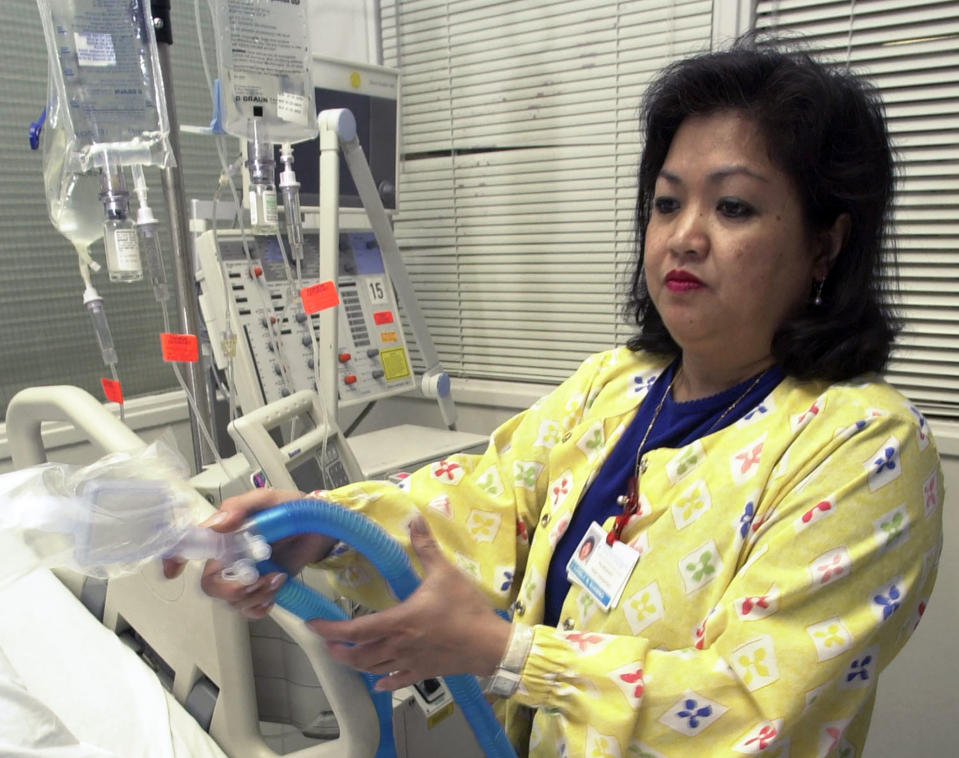Cuomo highlights a big coronavirus worry: 'It's all about the ventilators'
WASHINGTON — New York Gov. Andrew Cuomo on Wednesday explained that a basic problem facing hospitals in his state and around the country in the worsening coronavirus outbreak is a shortage of the equipment that helps critically ill people breathe.
“It’s all about the ventilators,” Cuomo said during a press briefing in Albany on the state’s response to the crisis.
Two of the governor’s aides then wheeled out an actual ventilator — a complicated piece of machinery that includes a digital display on a portable stand — which has hoses that can be attached to a patient to help the person breathe.
“I want to show you the ventilator. Our main scramble now is for ventilators. And everybody says, ‘What are the ventilators?’” Cuomo said. “This is the machine that you often see in hospitals. It’s commonplace in hospitals. It’s just the number that we need is much higher.”
On the current trajectory of cases, Cuomo said, in 45 days there could be a need for 37,000 ventilators in New York, a state that currently has only 3,000.
“That’s our main issue. And again that’s a projection. And projections can change,” he said. “But that’s the problem we’re dealing with.”
Many Americans often confuse ventilators with respirators — which refers to masks. Companies like 3M in Minnesota and Prestige Ameritech in Texas make these professional-grade face masks, and they are not intended for sick patients but rather for the medical workers who are caring for those stricken with COVID-19.
Respirator masks protect the mouth and nose of the person wearing them and can filter contaminants from the air that they breathe.

And so when Pentagon officials said Tuesday that they would provide 5 million respirator masks and 2,000 ventilators to the health care system, the word “masks” was sometimes dropped in initial reports, especially on social media.
A big difference between respirator masks and ventilators is that masks are much easier to make. 3M said in late February that it was already ramping up its production, moving to a seven-day workweek and hiring more people to work at its factories. Three weeks ago the U.S. government said it had a stockpile of 30 million N95 respirator masks but that in a worst-case scenario, it would need 300 million.
When it comes to ventilators, one estimate is that — worst-case — the total number of ventilators needed nationally would be around 740,000, but there are only around 160,000 available in the U.S. medical system.
Countries like Britain are even worse off. It has only around 5,000 ventilators, and has asked major car manufacturers with plants in the country — such as Rolls-Royce, Honda and Ford — to convert their assembly lines to ventilator production.
General Motors CEO Mary Barra is looking into whether the Detroit-based car manufacturer could also repurpose some of its shuttered factories to make ventilators, White House economic adviser Larry Kudlow told reporters Wednesday.
But it’s not clear whether that’s even feasible. Ventilators are complex devices. Jeff Bialos, a former Pentagon official in charge of industrial policy under President Bill Clinton, explained to Yahoo News that machines like ventilators require at least three things that take significant time to compile: specialized tooling that requires production line workers with specific skills, the raw materials to make each part, and the ability to meet standards.

“You can’t do those things overnight. Industrial processes are complicated and can’t be changed on a dime,” Bialos told Yahoo News.
Even assuming a production spike in the number of ventilators in the coming weeks, there’s the matter of training staff to use them.
One medical device CEO whose company makes ventilators, Chris Kiple, of Washington-based Ventec Life Systems, told Forbes that current worldwide production capacity, annually, is at around 40,000 to 50,000 machines. Kiple said his company is increasing its production.
_____
Read more from Yahoo News:




